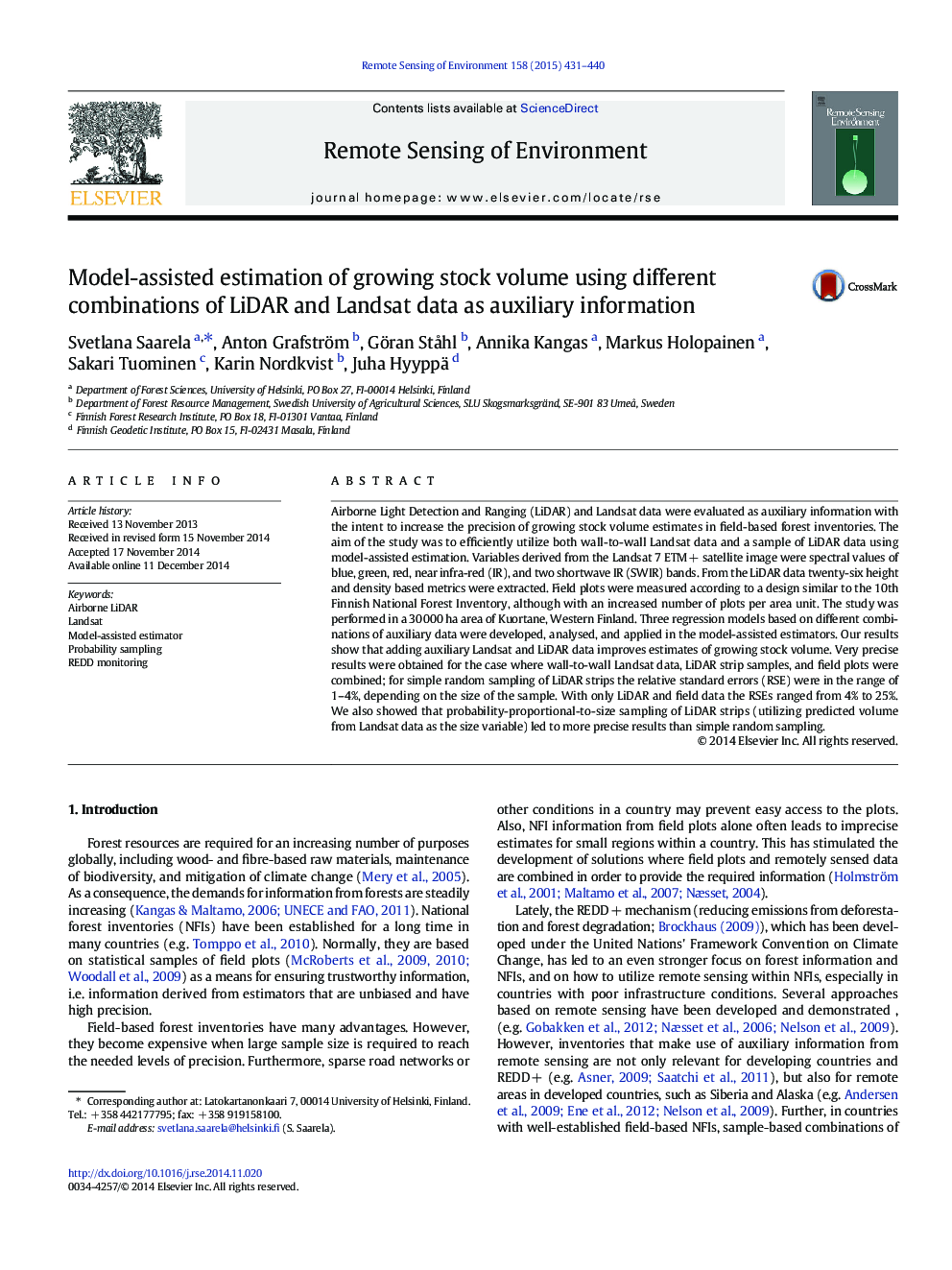| Article ID | Journal | Published Year | Pages | File Type |
|---|---|---|---|---|
| 6346277 | Remote Sensing of Environment | 2015 | 10 Pages |
Abstract
Airborne Light Detection and Ranging (LiDAR) and Landsat data were evaluated as auxiliary information with the intent to increase the precision of growing stock volume estimates in field-based forest inventories. The aim of the study was to efficiently utilize both wall-to-wall Landsat data and a sample of LiDAR data using model-assisted estimation. Variables derived from the Landsat 7 ETMÂ + satellite image were spectral values of blue, green, red, near infra-red (IR), and two shortwave IR (SWIR) bands. From the LiDAR data twenty-six height and density based metrics were extracted. Field plots were measured according to a design similar to the 10th Finnish National Forest Inventory, although with an increased number of plots per area unit. The study was performed in a 30Â 000Â ha area of Kuortane, Western Finland. Three regression models based on different combinations of auxiliary data were developed, analysed, and applied in the model-assisted estimators. Our results show that adding auxiliary Landsat and LiDAR data improves estimates of growing stock volume. Very precise results were obtained for the case where wall-to-wall Landsat data, LiDAR strip samples, and field plots were combined; for simple random sampling of LiDAR strips the relative standard errors (RSE) were in the range of 1-4%, depending on the size of the sample. With only LiDAR and field data the RSEs ranged from 4% to 25%. We also showed that probability-proportional-to-size sampling of LiDAR strips (utilizing predicted volume from Landsat data as the size variable) led to more precise results than simple random sampling.
Related Topics
Physical Sciences and Engineering
Earth and Planetary Sciences
Computers in Earth Sciences
Authors
Svetlana Saarela, Anton Grafström, Göran StÃ¥hl, Annika Kangas, Markus Holopainen, Sakari Tuominen, Karin Nordkvist, Juha Hyyppä,
